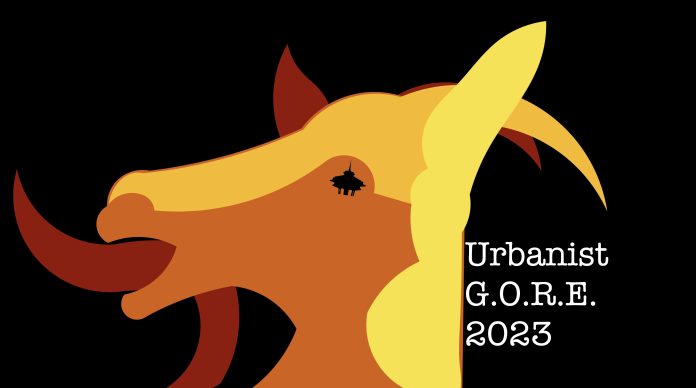Once again at the darkest part of the year, we gather in the spirit of Krampus, the Christmas demon who takes bad children into the woods and eats them. Even the most festive of holidays needs a little horror, and what’s more terrifying than looking into 2023?
So here’s eight things that we want to do and think about the coming year. It’s G.O.R.E., but not all bad. Goals where we want to put our energy. Obstacles where we see stumbles coming. Resolutions where we want to try better. And explorations where it could get interesting or all go wrong.
The surprise will always be getting any of these things correct. A year is simultaneously interminably long and incredibly short. It feels like we were just here, but that skips over variants and hearings and trials and three MCU movies and an entire new season of Stranger Things. We started the year concerned about the Russian war machine, after all. But we try. Good luck, all.

Goal: Avoid the temptation to host the Olympics
Now with the World Cup utterly finished, we turn to 2026 when the world’s premier sporting event comes to North America, where games will be played across Canada, Mexico, and the U.S. Following the Sounder’s strong showing in Concacaf and Seattle’s record breaking turnout for that event, the city bolted to the top of the list to host World Cup games in four years. Add in the new Climate Pledge Arena drawing hockey, concerts, and competitions, Seattle is resurgent as a destination for big time athletics.
So, there’s going to be a temptation to do something absolutely terrifying, and deeply stupid. Let’s nip it in the bud. Seattle should not host the Olympics.
Seattle’s history is full of examples where the world came to the city’s door and it was wonderful. Specifically, two examples. The Alaska-Yukon-Pacific Exposition in 1909 gave us the UW campus. And the Century 21 Exposition World’s Fair in 1962 gave us the Space Needle. What joys and wonders the city would get as the sole host of a truly 21st Century world exhibition like the modern Olympics?
Literally, none. As the costs for hosting has risen, the number of Olympic bid cities has dwindled. Boston outright rejected the chance. Besides, we’re getting a West Coast Olympics in six years when LA uses its existing pool of stadiums to host in 2028. Let’s cheer them on instead.
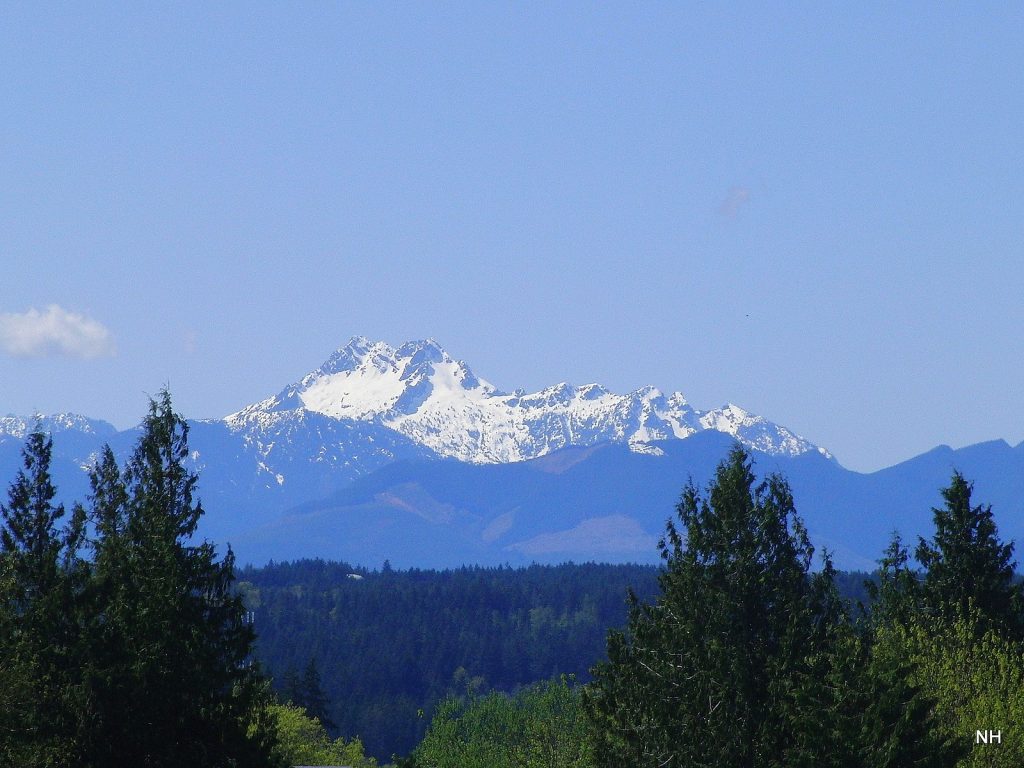
But if we want to have a party, perhaps we should start thinking about a new World’s Fair. It’s been sixty years, so we’re due. While we do love sports, the medium of a World’s Fair may actually fit Seattle’s personality a bit better since we excel at doing behind-the-scenes work. Nordstroms started by outfitting folks for Alaska. Costco is a warehouse company. Microsoft an operating system company. Amazon is both. The Olympics is a show of skills. A World’s Fair would let Seattle show its true character.
It’ll just take the U.S. rejoining the Bureau International des Expositions, submitting a bid for 2035, and defeating whoever of Busan, Rome, or Riyadh doesn’t win the pleasure of hosting in 2030. To put it simply, we could get a new World’s Fair before light rail arrives in Ballard.
Obstacle: Megaproject Glut
In the category of overdoing it, the Pacific Northwest has several very expensive items simmering at the same time. There’s a new bridge across the Columbia that’s ticking up another $2 billion or so. There’s a new SeaTac-sized airport struggling to find a site. And there’s studies for high speed “ground transportation” that should be rail but has to fend off Hyperloop vaporware that literally sucks. All that is on top of the expanding light rail, dozens of other bridge rebuilds, end of construction on I-5 in Tacoma, and the completion of Alaskan Way/Son of Viaduct on Seattle’s downtown waterfront.
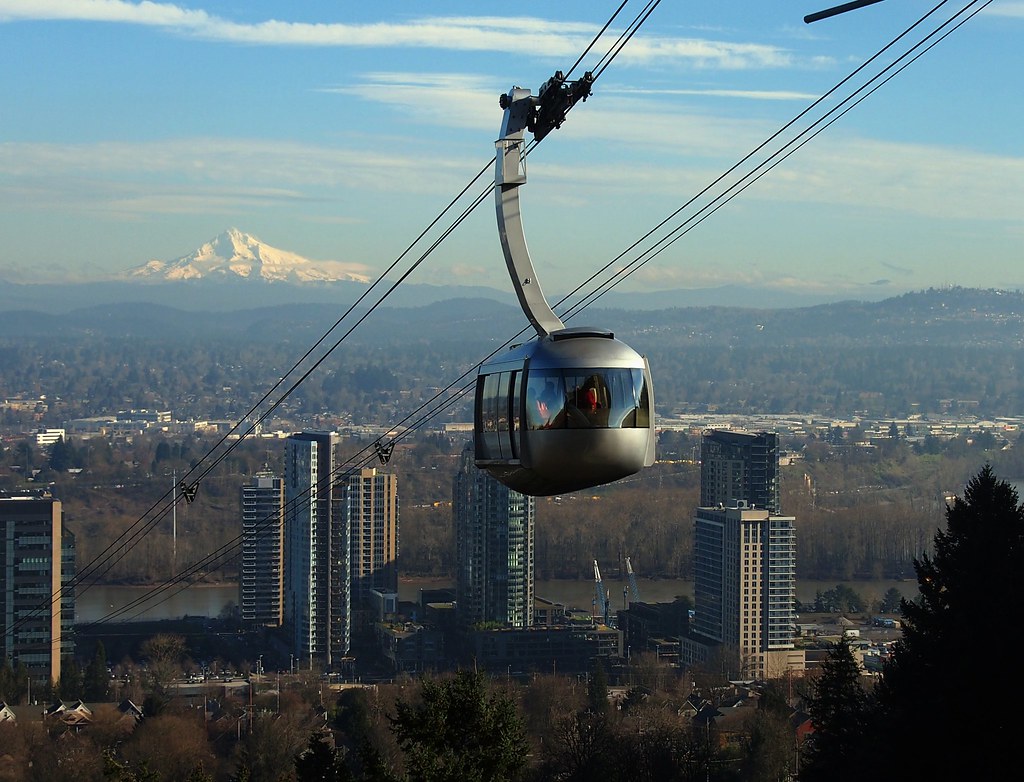
With infrastructure projects — even parts of infrastructure projects — regularly going over the $1 billion mark, it’s very easy to lose sight of what a megaproject actually is. These projects are not self-contained road resurfacing and scaffold paint. They’re fundamental restructuring of how we get around, and what it does to our region and atmosphere.
It’s a little like getting a 72” television for Christmas. Sure, we beat the crud out of other folks the day after Thanksgiving to be at the front of the line and got a good deal on it. But do we have any perspective on the way this massive THING in the living room is going to intrude in our lives? Besides mounting the beast on the wall and the miles of wires needed to get around it, all the furniture needs to take three steps back. Its unblinking eye will constantly fill the room with light and sound while draining power and subscription fees. And we’re trying to buy three TVs at the same time.
Perhaps that’s the perspective that’s missing here. All these transportation projects are so tied together that we’re not dealing with separate road, air, and rail megaprojects. We’re dealing with a single generational transportation evolution, and airports, trains, and cars are part of it. The obstacle is seeing these separately, and missing both the opportunity to solve so much and the dangers of status quo.
Resolution: Appreciate the massive amounts of publicly available data
Tech friendly Washington and its departments put a metric ton of data out for public use. Each city and county piles more on top. We are in a golden age of information coming out of the work that government performs.
Unfortunately, the amount of data is so massive that there is a predilection to oversimplify it and draw bad conclusions. Averages are so much more appealing than ranges. It’s deeply satisfying to comb through some of this data and find, hey! half the city is on either side of this arbitrary line.
None other than Jane Jacobs reminds us not to do that. Cities are complex beasts, and these enormous data sets only reinforce how many different things are going on at any given time. We don’t have to draw an absolute conclusion or bright line rule from these tables. Sometimes, we can just look at them and say that’s pretty rad.
Exploration: Use some of that data
THERE’S AN ENTIRE WSDOT PAGE DEVOTED TO FISH CROSSINGS. We are lucky to know very smart people who are creating and using this data. We should be among them. But, as said, smartly.
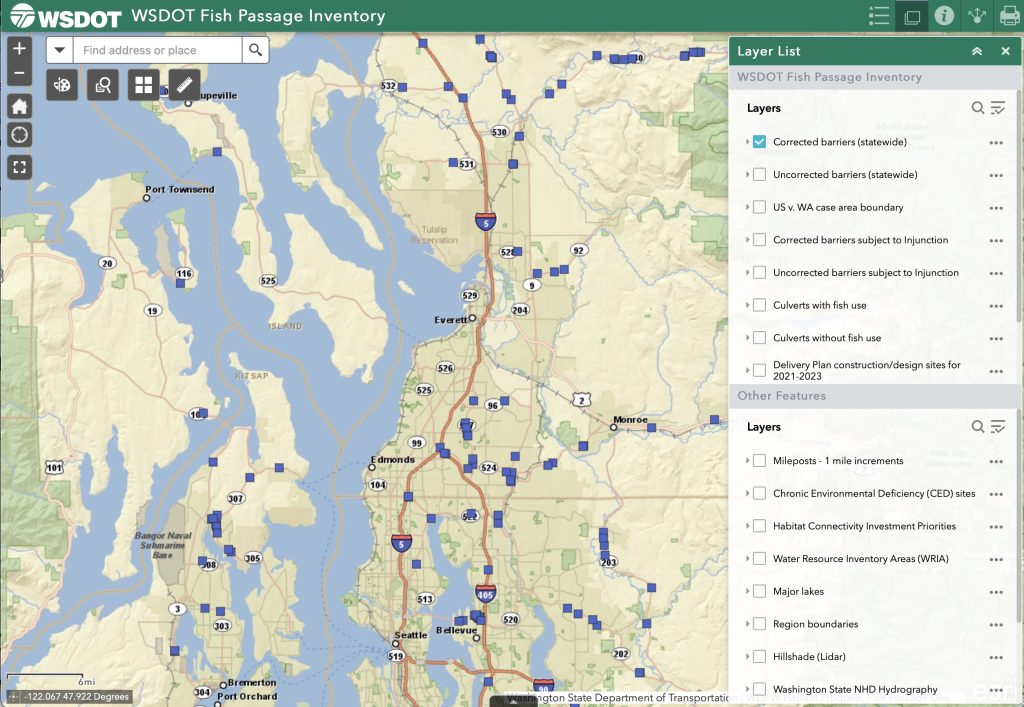
Goal: Actually keeping track of how we’re doing
There’s that old adage that, if you don’t count, it doesn’t count. And we’ve been known to get to the gym without our fitness tracker and not really put full effort, just because it’s not counting. So, a goal for this year is going to be figuring out the stuff we want to understand, and figure out how to count it.
Now, over the past few years, we’ve tried some of that with various agenda forms and habit planners. And they’re fine. But are they really telling us what we want to know? Sometimes. One of the best things we’ve done recently was writing down a short blurb after finishing any book — digital, audio, or dead tree. No, it wasn’t as many as we wanted. But it was a reminder that there were quite a few, some of them were good, and all the time was not wasted.
To that end, here’s a handy list of how we did from last year’s Urbanist GORE 2022.
- Goal: Make all infrastructure funds function like Build Back Better — Kinda. Kinda not.
- Obstacle: Design Review and Re-exerting Aesthetic Controls — Oh, working on that.
- Resolution: Discard the Term NIMBY — We didn’t use NIMBY once in the last year, so woot us.
- Exploration: The region’s waste stream — Yeah, didn’t quite get that done.
- Goal: Track and Comment on #WALEG’s 60-day session — Wrecked it.
- Obstacle: The Great Resignation, Beta Variant — Still dealing, including teacher strikes, concrete strikes, and unionization pushes. But didn’t quite see “quiet quitting” as a thing.
- Resolution: Stop calling Bellevue the suburbs (or worse) — Put plenty of love on the east side this year, and will do more in the next.
- Exploration: The U District Crane Farm — It’s been an excuse to enjoy boba.
Obstacle: Comp Plan Malaise
Over the last year, The Urbanist has run about thirty articles on comprehensive planning. As this is our wheelhouse — policy, land use, open complaining — this makes complete sense. The comp plans are vital to the way Washington allows its jurisdictions to zone, and engaging the most people is the only way to make sure these don’t backslide into more climate arson and McMansions.
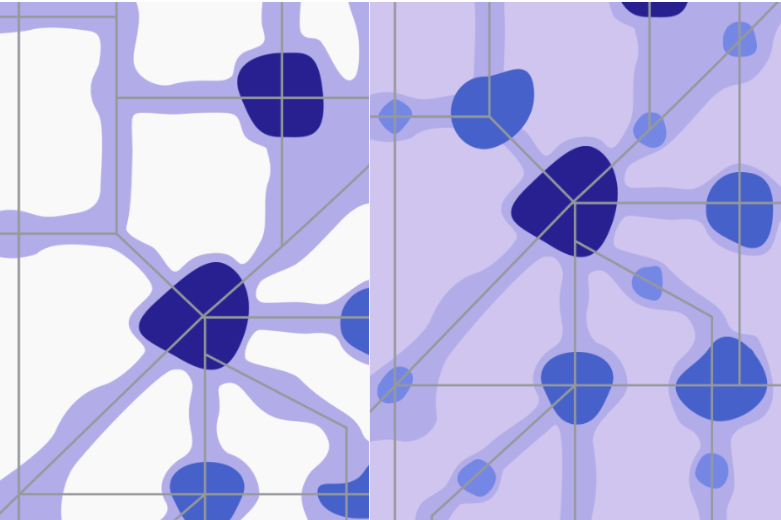
The bad news is that we’ve got another year of this. And the specifics can get wonky. As Ron Davis talked about on The Urbanist Podcast, it should be enough for people to just say “we want more housing” and that to be sufficient. But whether that’s on a boulevard or avenue, and the cost per square foot to offset the increase price for elevators at an FAR above…whew. It can get bogged down quickly. How many times we have to repeat that line and in how many different places has the absolute potential to become exhausting.
Hell, having the Comp Plan stuff show up in yet another year-ender article is kinda tiresome already.
Resolution: Remembering who is on the payroll
There is no illusion that media is run on advertising. Whether it’s straight up ads like run here, or the underwriting that is done on NPR, companies trade some cash to get their name in front of folks. We use that cash to pay for these hard-hitting exposés and the insight you come to adore. Even editors deserve a drink. And we do keep ads looking like ads, and not the long-trailing page of “clear your bowels” and “5 easy tricks” sponsored photo panels.
So when the local fishwrap comes out with yet another terrible editorial touting the primacy of suburbs and the need for segregationist local control, it is useful to remember which side their bread is buttered. The paper gets printed full of real estate advertisements and Homestyle supplemental inserts. That’s in addition to straight up profiteering from redlining, of which the Seattle Times has a long and devastating history.
The source of funds can be a little hazier for some pseudo-intellectual organization like the local conservative cesspool Discovery Institute. Run by equity partners and generational wealth, they have personal interests in preventing useful things around Seattle, like expanding housing or progressive taxation. So, the fellows they distribute to stalk people on a single block of 3rd Avenue should be understood as performers, not press.
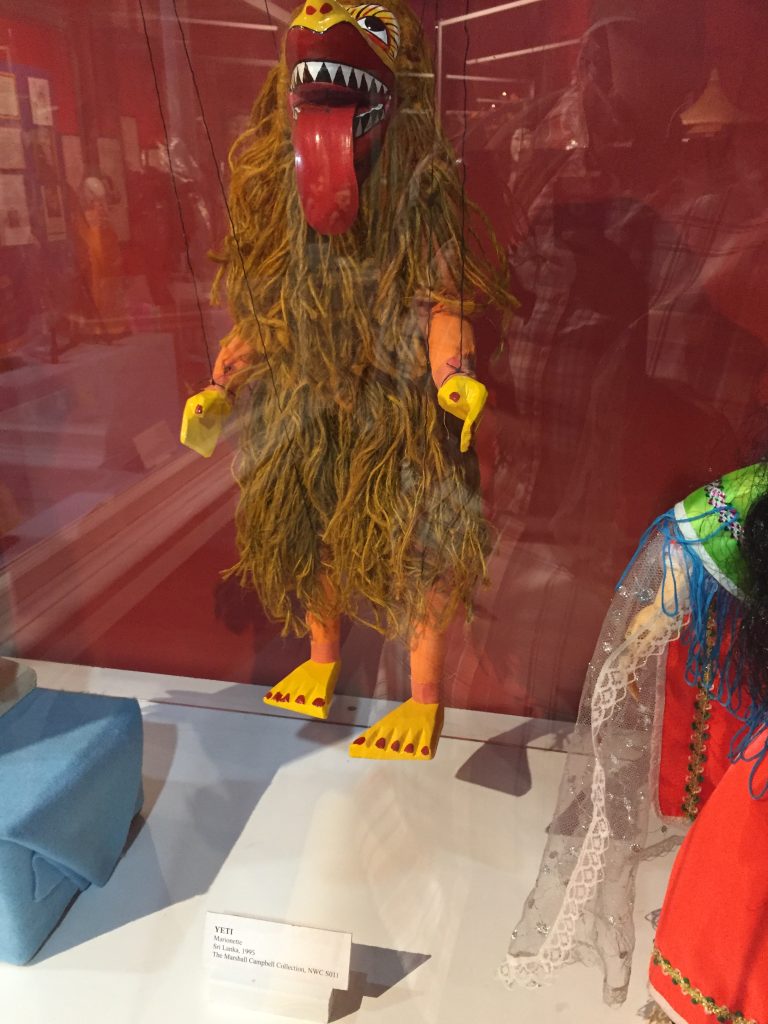
Exploration: The Region’s Smaller Museums
We love ourselves a museum, and Seattle has some great ones where we can lose a whole day. But that overlooks the multitudes of smaller and very worthwhile historical sites and tiny collections in the area. So many of the region’s many towns – Dupont, Black Diamond, and Edmonds for example – have their own historical centers. Every military base in the region has some collection on site to visit. And then there’s the goofy and fun ones, like the World Kite Museum in Long Beach and the Aberdeen Mermaid Museum (helpfully at a winery, should ye be tempted by the siren song).
Occasionally, we’ve been turned off to certain attractions, particularly science centers and children’s museums. They end up being more fast food playplace holding pens than something interesting or even fun. And at $25 a pop, we want fries at least.
But where those fail and random town’s collection of nutcrackers or puppets succeed is that old Linus in the pumpkin patch goal: sincerity. Anywhere can download a couple of weather lessons onto an iPad and call it an interactive exhibit. But it takes a special kind of dedication to make a scale model of the town or restore a tugboat.
Ray Dubicki is a stay-at-home dad and parent-on-call for taking care of general school and neighborhood tasks around Ballard. This lets him see how urbanism works (or doesn’t) during the hours most people are locked in their office. He is an attorney and urbanist by training, with soup-to-nuts planning experience from code enforcement to university development to writing zoning ordinances. He enjoys using PowerPoint, but only because it’s no longer a weekly obligation.

